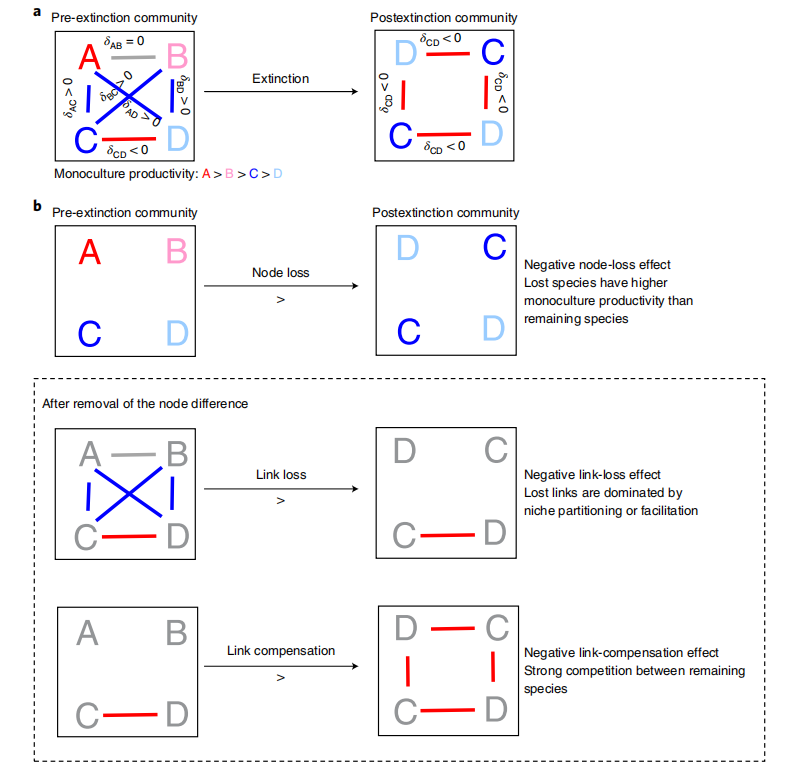Chen Y.X., Huang Y.Y., Niklaus P.A., Castro-Izaguirre N., Clark A.T., Bruelheide H., Ma K.P. and Schmid B.. 2020. Nature Ecology and Evolution, 4(4):660.
Unprecedented species loss in diverse forests indicates the urgent need to test its consequences for ecosystem functioning. However, experimental evaluation based on realistic extinction scenarios is lacking. Using species interaction networks we introduce an approach to separate effects of node loss (reduced species number) from effects of link loss or compensation (reduced or increased interspecific interactions) on ecosystem functioning along directed extinction scenarios. By simulating random and non-random extinction scenarios in an experimental subtropical Chinese forest, we find that species loss is detrimental for stand volume in all scenarios, and that these effects strengthen with age. However, the magnitude of these effects depends on the type of attribute on which the directed species loss is based, with preferential loss of evolutionarily distinct species and those from small families having stronger effects than those that are regionally rare or have high specific leaf area. These impacts were due to both node loss and link loss or compensation. At high species richness (reductions from 16 to 8 species), strong stand-volume reduction only occurred in directed but not random extinction. Our results imply that directed species loss can severely hamper productivity in already diverse young forests.

Figure 1. Conceptual diagram showing the processes affecting community productivity after loss of species A and B from a community of four species A–D. a, Species interactions (links) connect the four species (nodes) within the community as a network. Extinction causes the loss of two nodes (A and B) and five links (blue and grey lines), while the density compensation by the remaining species (C and D) increases the frequency of interaction between the remaining species (red lines; link compensation). Species links can have negative (red lines; δ< 0 due to interspecific competition), positive (blue lines; δ> 0 due to niche partitioning or facilitation) or neutral (grey line; δ= 0 when intraspecific competition = interspecific competition) contributions to community productivity compared with corresponding monocultures. b, Partitioning of the net extinction effect from a into three components. The node-loss effect only considers the difference relating to monoculture yields between lost and remaining species. If lost species (A and B) have higher monoculture productivity than remaining species (C and D), the pre-extinction community yields more than the postextinction community (indicated by‘>’) and the effect of node loss is negative. We can derive the effects of link loss and compensation after removing the node-loss effect (greyed species symbols). If the lost links (blue and grey lines) are dominated by niche partitioning or facilitation, the pre-extinction community is more productive than the postextinction community (‘>’) and the effect of link loss is negative. If there is strong competition between remaining species (red lines), the preextinction community is more productive than the postextinction community (‘>’) and the effect of link compensation is negative.

